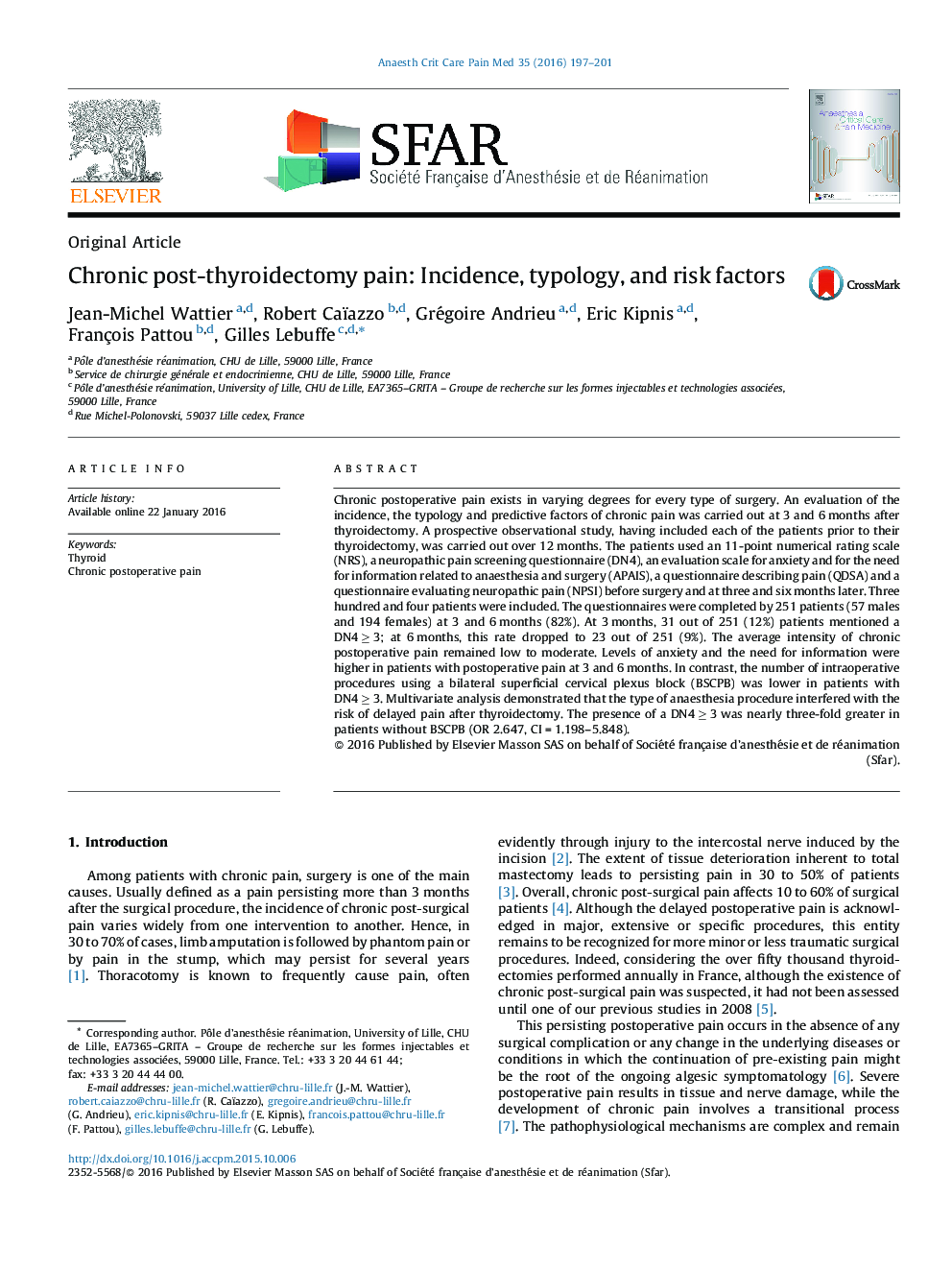| Article ID | Journal | Published Year | Pages | File Type |
|---|---|---|---|---|
| 2741876 | Anaesthesia Critical Care & Pain Medicine | 2016 | 5 Pages |
Chronic postoperative pain exists in varying degrees for every type of surgery. An evaluation of the incidence, the typology and predictive factors of chronic pain was carried out at 3 and 6 months after thyroidectomy. A prospective observational study, having included each of the patients prior to their thyroidectomy, was carried out over 12 months. The patients used an 11-point numerical rating scale (NRS), a neuropathic pain screening questionnaire (DN4), an evaluation scale for anxiety and for the need for information related to anaesthesia and surgery (APAIS), a questionnaire describing pain (QDSA) and a questionnaire evaluating neuropathic pain (NPSI) before surgery and at three and six months later. Three hundred and four patients were included. The questionnaires were completed by 251 patients (57 males and 194 females) at 3 and 6 months (82%). At 3 months, 31 out of 251 (12%) patients mentioned a DN4 ≥ 3; at 6 months, this rate dropped to 23 out of 251 (9%). The average intensity of chronic postoperative pain remained low to moderate. Levels of anxiety and the need for information were higher in patients with postoperative pain at 3 and 6 months. In contrast, the number of intraoperative procedures using a bilateral superficial cervical plexus block (BSCPB) was lower in patients with DN4 ≥ 3. Multivariate analysis demonstrated that the type of anaesthesia procedure interfered with the risk of delayed pain after thyroidectomy. The presence of a DN4 ≥ 3 was nearly three-fold greater in patients without BSCPB (OR 2.647, CI = 1.198–5.848).
